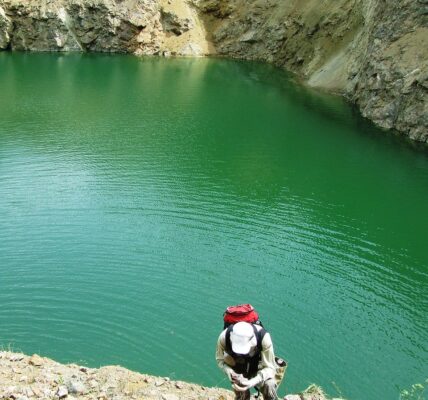The main object of study in geology is the Earth’s crust, as well as the geological processes and history of the Earth:
Minerals
A mineral is a naturally occurring chemical compound, usually crystalline and abiogenic (inorganic) in origin. A mineral has one specific chemical composition, while a stone may be a collection of different minerals or mineraloids. The science of minerals is called mineralogy.
There are more than 5,300 known types of minerals. Silicate minerals make up over 90% of the Earth’s crust. Silicon and oxygen form about 75% of the Earth’s crust, which is directly related to the predominance of silicate minerals.
Minerals differ in chemical and physical properties. Differences in chemical composition and crystal structure make it possible to recognize the species that were determined by the geological environment of the mineral when they were formed. Fluctuations in temperature, pressure or bulk composition of a rock mass cause changes in minerals.
Rocks
Rocks are solid mixtures of at least one mineral. While minerals have crystals and chemical formulas, rocks are characterized by texture and mineral composition. On this basis, rocks are divided into three groups: igneous rocks (formed by the gradual cooling of magma), metamorphic rocks (formed by the alteration of igneous and sedimentary rocks) and sedimentary rocks (formed at low temperatures and pressures when marine and continental sediments are transformed). These three major rock types participate in a process called the rock cycle, which describes the labor-intensive transitions, both on the surface and underground, from one rock type to another over long periods of geologic time.
Fossils
Fossils are signs of living things that existed a very long time ago. They can represent imprints of bodies or even products of organisms. Fossils also include footprints, burrows, nests, and other indirect signs. Fossils are clear evidence of early life on Earth. Geologists have compiled an account of ancient life extending back hundreds of millions of years.
Fossils are of practical importance because they change throughout geologic time. The assemblage of fossils serves to identify rocks. The geologic time scale is based almost exclusively on fossil remains and is supplemented by other dating methods. With its help, we can confidently compare sedimentary rocks from around the world. Fossils are also valuable museum pieces and collectors’ items.
Landforms, Geologic Structures, and Maps
Landforms in all their diversity are the result of the rock cycle. They have been shaped by erosion and other processes. Landforms provide information about how the Earth’s crust formed and changed in the geologic past, such as the Ice Age.
Geologic Processes and Threats
Geologic processes result in the cycling of rocks, the creation of structures and landforms, and fossils. They include erosion, deposition, fossilization, faulting, uplift, metamorphism, and volcanism.
Geologic hazards are powerful expressions of geologic processes. Landslides, volcanic eruptions, earthquakes, tsunamis, climate change, floods, and cosmic impacts are prime examples of hazards. Understanding basic geologic processes can help humanity reduce the damage from geologic disasters.
Earth Tectonics and History
Tectonics is geological activity at its largest scale. As geologists mapped rocks and studied geological features and processes, they began to raise and answer questions about tectonics-the life cycle of mountain ranges and volcanic chains, the movement of continents, the rise and fall of world ocean levels, and what processes occur in the Earth’s core and mantle. Plate tectonics explains how the lithospheric plates move and has made it possible to study our planet as a single structure.
Earth’s geologic history is the story told by minerals, rocks, fossils, topography, and tectonics. Studies of fossils, combined with various methods, provide a coherent evolutionary history of life on Earth. The Phanerozoic Eon (age of the fossils) of the last 542 million years is well mapped as a time of abundant fauna and flora and accented by mass extinctions. The previous four billion years, Precambrian time, was a time of huge changes in the atmosphere, oceans, and continents.




